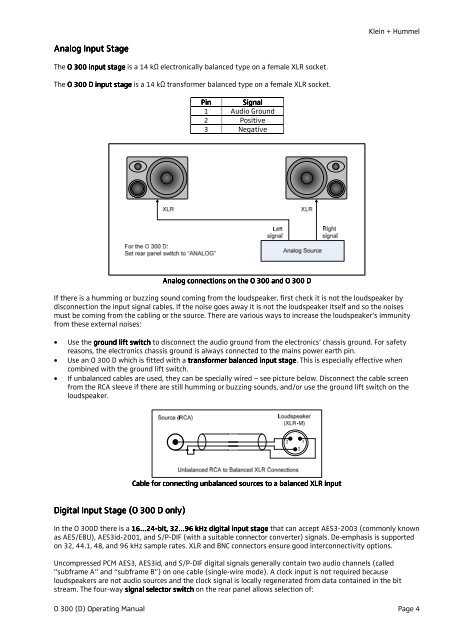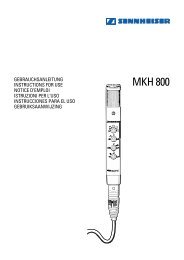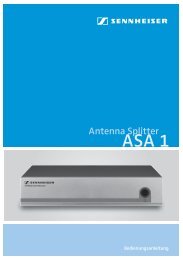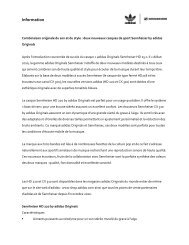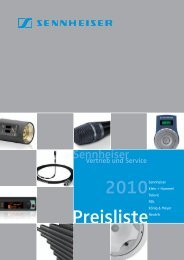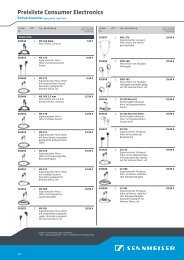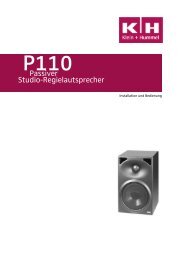O 300 (D) Operating Manual v01 - Klein + Hummel
O 300 (D) Operating Manual v01 - Klein + Hummel
O 300 (D) Operating Manual v01 - Klein + Hummel
You also want an ePaper? Increase the reach of your titles
YUMPU automatically turns print PDFs into web optimized ePapers that Google loves.
<strong>Klein</strong> + <strong>Hummel</strong><br />
Analog Input Stage<br />
The O <strong>300</strong> input stage is a 14 kΩ electronically balanced type on a female XLR socket.<br />
The O <strong>300</strong> D input stage is a 14 kΩ transformer balanced type on a female XLR socket.<br />
Pin<br />
Signal<br />
1 Audio Ground<br />
2 Positive<br />
3 Negative<br />
Analog connections on the O <strong>300</strong> and O <strong>300</strong> D<br />
If there is a humming or buzzing sound coming from the loudspeaker, first check it is not the loudspeaker by<br />
disconnection the input signal cables. If the noise goes away it is not the loudspeaker itself and so the noises<br />
must be coming from the cabling or the source. There are various ways to increase the loudspeaker’s immunity<br />
from these external noises:<br />
• Use the ground lift switch to disconnect the audio ground from the electronics’ chassis ground. For safety<br />
reasons, the electronics chassis ground is always connected to the mains power earth pin.<br />
• Use an O <strong>300</strong> D which is fitted with a transformer balanced input stage. This is especially effective when<br />
combined with the ground lift switch.<br />
• If unbalanced cables are used, they can be specially wired – see picture below. Disconnect the cable screen<br />
from the RCA sleeve if there are still humming or buzzing sounds, and/or use the ground lift switch on the<br />
loudspeaker.<br />
Cable for connecting unbalanced sources to a balanced XLR input<br />
Digital Input Stage (O <strong>300</strong> D only)<br />
In the O <strong>300</strong>D there is a 16…24-bit, 32…96 kHz digital input stage that can accept AES3-2003 (commonly known<br />
as AES/EBU), AES3id-2001, and S/P-DIF (with a suitable connector converter) signals. De-emphasis is supported<br />
on 32, 44.1, 48, and 96 kHz sample rates. XLR and BNC connectors ensure good interconnectivity options.<br />
Uncompressed PCM AES3, AES3id, and S/P-DIF digital signals generally contain two audio channels (called<br />
“subframe A” and “subframe B”) on one cable (single-wire mode). A clock input is not required because<br />
loudspeakers are not audio sources and the clock signal is locally regenerated from data contained in the bit<br />
stream. The four-way signal selector switch on the rear panel allows selection of:<br />
O <strong>300</strong> (D) <strong>Operating</strong> <strong>Manual</strong> Page 4


